Fleurs du Mal Magazine


Or see the index
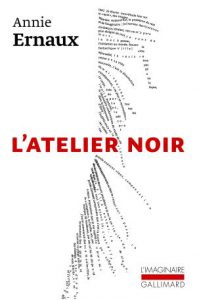 Tous les livres que j’ai écrits ont été précédés d’une phase, souvent très longue, de réflexions et d’interrogations, d’incertitudes et de directions abandonnées.
Tous les livres que j’ai écrits ont été précédés d’une phase, souvent très longue, de réflexions et d’interrogations, d’incertitudes et de directions abandonnées.
À partir de 1982, j’ai pris l’habitude de noter ce travail d’exploration sur des feuilles, avec des dates, et j’ai continué de le faire jusqu’à présent. C’est un journal de peine, de perpétuelle irrésolution entre des projets, entre des désirs. Une sorte d’atelier sans lumière et sans issue, dans lequel je tourne en rond à la recherche des outils, et des seuls, qui conviennent au livre que j’entrevois, au loin, dans la clarté.
A. E.
Parallèlement à ses romans, Annie Ernaux tient un journal d’avant-écriture ; une sorte de livre de fouilles, rédigé année après année, qui offre une incursion rare de « l’autre côté » de l’œuvre.
Plongé au cœur même de l’acte d’écrire, le lecteur devient témoin du long dialogue de l’autrice avec elle-même : la pensée taillée au couteau, des idées en vrac, des infinitifs en mouvement ; des associations de mots, de morceaux de temps, et de confidences.
Pour la réédition de L’atelier noir, Annie Ernaux a souhaité augmenter l’ouvrage de pages inédites de son journal de Mémoire de fille.
Annie Ernaux
L’atelier noir
Édition augmentée
Collection L’Imaginaire (n° 733), Gallimard
Parution: 10-02-2022 – Poche 10 €
180 pages, sous couverture illustrée, 125 x 190 mm
Achevé d’imprimer : 01-01-2022
Genre : Mémoires et autobiographies Catégorie – Littérature
Époque : XXe-XXIe siècle
ISBN : 9782072958441
• fleursdumal.nl magazine
More in: - Book News, - Book Stories, Archive E-F, Archive E-F

Anne Feddema
Kuierke – Skaad…Ljocht
Wandelingetje – Schaduw… Licht
(Particuliere collectie NL)
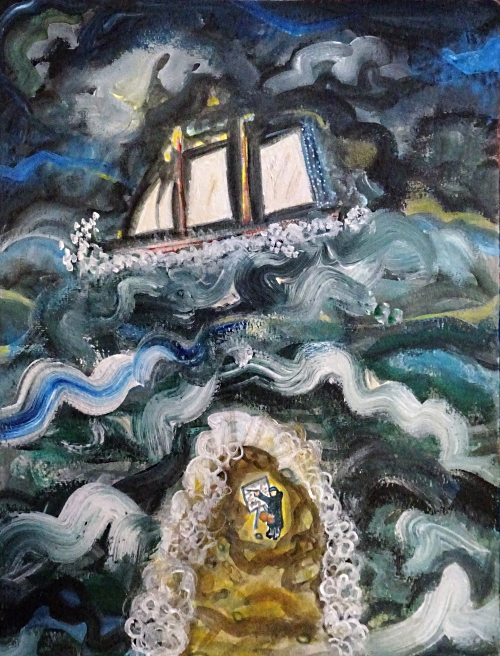
Anne Feddema
Min Waarskilder – Skip
Slecht Weerschilder – Schip
(Particuliere collectie NL)
Anne Feddema (Leeuwarden, 1961) is schrijver, dichter en beeldend kunstenaar. Hij volgde een beeldende opleiding aan het gerenommeerde Ateliers ’63. In 2007 ontving hij voor zijn schilderkunst de Margaretha de Heerprijs en in 2009 de Gysbert Japicxprijs voor Friese literatuur. Zijn beeldend werk is getoond in musea zoals het Groninger Museum, het Fries Museum en Museum Belvédère. Feddema schrijft zowel in het Fries als in het Nederlands. Daarnaast vertaalt hij werk van andere dichters in het Fries. Verder trad Anne Feddema regelmatig op met zijn gedichten, o.a. tijdens het Poetry International-festival in Rotterdam.
©Anne Feddema
• fleursdumal.nl magazine
More in: Anne Feddema, Archive E-F, Archive E-F, Feddema, Anne
In about: blank, Tracy Fuad builds a poetics of contemporary dissociation.
 Funny, plaintive, and cutting, this formally inventive debut probes alienation in place and in language through the author’s consideration of her own relationship to Iraqi Kurdistan. about: blank–the title of which is the universal URL for a blank web page–complicates questions of longing and belonging. Interrogating the language of internet chatrooms, Yelp reviews, and the Kurdish dictionary, the poems here leap surprisingly between subjects to find new meaning.
Funny, plaintive, and cutting, this formally inventive debut probes alienation in place and in language through the author’s consideration of her own relationship to Iraqi Kurdistan. about: blank–the title of which is the universal URL for a blank web page–complicates questions of longing and belonging. Interrogating the language of internet chatrooms, Yelp reviews, and the Kurdish dictionary, the poems here leap surprisingly between subjects to find new meaning.
Written before and during the years the author spent living in Iraqi Kurdistan, the collection documents the alienation of being inside, outside, and between language(s) and the always-already terror of grammar. At once haunted and humorous, about: blank inhabits and exhibits the disorientation and fragmentation that is endemic to the internet era, and mourns the loss of a more embodied existence.
Tracy Fuad is the author of PITH, winner of the Gloria Anzaldúa Prize, and DAD DAD DAD DAD DAD DAD DAD. Her work has appeared in Poetry, the Best New Poets Anthology, the New Republic, and elsewhere. She is a graduate of the Rutgers-Newark MFA program and a 2021-2022 Writing Fellow at the Providence Fine Arts Work Center.
Title: about: blank
by Tracy Fuad
Language: English
Publish Date: October 19, 2021
Publisher: University of Pittsburgh Press
Pages 96
Type: Paperback
EAN/UPC 9780822966685
Price $18.00
• fleursdumal.nl magazine
More in: #Editors Choice Archiv, - Book News, Archive E-F, Archive E-F, LITERARY MAGAZINES
Naoko Fujimoto translates her poems (that are written in English on flat paper) into words and images to create a contemporary picture scroll.
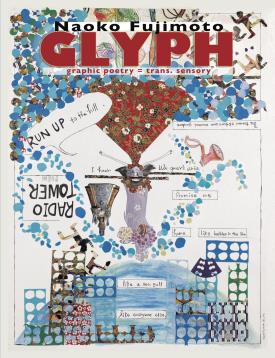 The picture scroll in Japanese is Emaki (eh-MA-kee) and the style has been popular since the 7-16th centuries in Japan. It is still a widely recognized art style in Japan and the rest of the world. Emaki is akin to a current graphic novel / poetry / comic. One of the most famous Emaki is the Tale of Genji, which is a fictional (perhaps gossip) story about a handsome son of the emperor.
The picture scroll in Japanese is Emaki (eh-MA-kee) and the style has been popular since the 7-16th centuries in Japan. It is still a widely recognized art style in Japan and the rest of the world. Emaki is akin to a current graphic novel / poetry / comic. One of the most famous Emaki is the Tale of Genji, which is a fictional (perhaps gossip) story about a handsome son of the emperor.
The graphic poetry project is also meant for the viewer to transport their senses from the flat paper and bridge the gap between words and images that will connect with their physical counterparts. Like a historical Emaki, there are side stories hidden behind some of the main graphic narratives— be they comedic or serious— for audiences to interpret. All of the details (choice of words, origami paper, or styles) have a specific meaning to contribute to the whole.
In June, 2016, Naoko Fujimoto decided to take a year off to be a full-time poet and artist. People around her asked why she was leaving a stable job, and if she was going to be a starving artist. She wanted to find out how far she can succeed as a poet and artist. After all, if she gets lost, she can just come back to what worked before.
During the year, she had opportunities to not only read books, but also explore and live with classic and contemporary works, such as the Massachusetts Museum of Contemporary Art, Metropolitan Museum of Art, San Francisco Museum of Modern Art, Art Institute of Chicago, Tokugawa Museum, and Museum of Contemporary Art Tokyo. There, she revisited her idea of how she could create an effective melding of poetry and art; perhaps, words and images.
The following, entitled “The Duck’s Smile”, was her first attempt. She wrote an original poem for a project named, “Killing Sally McHill”, which was a protest against common violence hidden around the house, school, office, and society. “The Duck’s Smile” was specifically written about a hierarchy in a small community between the narrator and Sally. Her first graphic poem adapted a written poem into a graphic narrative. The poem started from the top left corner and progressed to the bottom right. It took a simple black and white art approach, but did not quite embody how she wanted it to be represented.
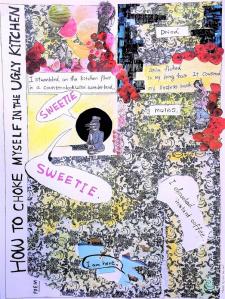 Naoko Fujimoto researched art works of inclusions of “word” and “image” such as László Moholy-Nagy, Hiroshige Utagawa, William Blake, Francisco Goya, and many other writers and artists. Then when she observed works by a German painter and sculptor, Anselm Kiefer, she understood that poetry must have explosions of creativity. Coincidentally, she had the chance to attend a workshop with Robin Coste Lewis, who critiqued the poems to be tight in structure, but reminded to forget about grammar and rules from time to time to experiment freely.
Naoko Fujimoto researched art works of inclusions of “word” and “image” such as László Moholy-Nagy, Hiroshige Utagawa, William Blake, Francisco Goya, and many other writers and artists. Then when she observed works by a German painter and sculptor, Anselm Kiefer, she understood that poetry must have explosions of creativity. Coincidentally, she had the chance to attend a workshop with Robin Coste Lewis, who critiqued the poems to be tight in structure, but reminded to forget about grammar and rules from time to time to experiment freely.
So she chose to adapt a traditional Japanese Emaki style (an illustrated narrative art). The original poem was carefully scattered specific phrases or implied images were selected, with the rest being ignored (like the poetry erasure technique). She traveled to find paper and objects, such as supermarket advertisements, birthday gift wrapping, postcards, origami, magazines, and other materials rich in color and texture. She wrote about relatable life conflicts, so using common objects in turn grounded her graphic poetry.
Naoko Fujimoto was born and raised in Nagoya, Japan. She studied at Nanzan Junior College and received BA and Master’s degrees from Indiana University. Recent work appears or is forthcoming in POETRY, Kenyon Review, Seattle Review, Quarterly West, North American Review, Hayden’s Ferry Review, Prairie Schooner, Crazyhorse, and The Arkansas International. She is the author of Glyph:Graphic Poetry=Trans. Sensory (Tupelo Press, 2021), Where I Was Born (Willow Publishing, 2019), and three chapbooks. She is an associate & outreach translation editor at RHINO Poetry. (naokofujimoto.com)
Glyph: Graphic Poetry=Trans. Sensory
by Naoko Fujimoto
Published: June 2021
ISBN: 978-1-946482-52-5
Publisher: Tupelo Pess
1st edition (June 1, 2021)
Language : English
Paperback
64 pages
ISBN-10 : 1946482528
ISBN-13 : 978-1946482525
$21.95
# new poetry
Naoko Fujimoto
Glyph: Graphic Poetry=Trans. Sensory
• fleursdumal.nl magazine
More in: #Archive Concrete & Visual Poetry, *Concrete + Visual Poetry K-O, - Book News, Archive E-F, Archive E-F, Art & Literature News, AUDIO, CINEMA, RADIO & TV, MUSEUM OF LOST CONCEPTS - invisible poetry, conceptual writing, spurensicherung, Visual & Concrete Poetry
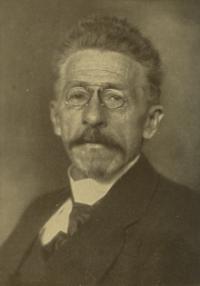
Ganz still zuweilen . . .
Ganz still zuweilen wie ein Traum
klingt in dir auf ein fernes Lied…
Du weißt nicht, wie es plötzlich kam,
du weißt nicht, was es von dir will…
und wie ein Traum ganz leis und still
verklingt es wieder, wie es kam…
Wie plötzlich mitten im Gewühl
der Straße, mitten oft im Winter
ein Hauch von Rosen dich umweht,
wie oder dann und wann ein Bild
aus längst vergessenen Kindertagen
mit fragenden Augen vor dir steht…
Ganz still und leise, wie ein Traum…
Du weißt nicht, wie es plötzlich kam,
du weißt nicht, was es von dir will,
und wie ein Traum ganz leis und still
verblaßt es wieder, wie es kam.
Cäsar Flaischlen
(1864-1920)
Ganz still zuweilen . . .
• fleursdumal.nl magazine
More in: # Classic Poetry Archive, Archive E-F, Archive E-F
What is it like to grow up in a place where the same police officer who told your primary school class they were special stops and searches you at 13 because ‘you fit the description of a man’ – and where it is possible to walk two and a half miles through an estate of 1,444 homes without ever touching the ground?
 In Poor, Caleb Femi combines poetry and original photography to explore the trials, tribulations, dreams and joys of young Black boys in twenty-first century Peckham.
In Poor, Caleb Femi combines poetry and original photography to explore the trials, tribulations, dreams and joys of young Black boys in twenty-first century Peckham.
He contemplates the ways in which they are informed by the built environment of concrete walls and gentrifying neighbourhoods that form their stage, writes a coded, near-mythical history of the personalities and sagas of his South London youth, and pays tribute to the rappers and artists who spoke to their lives.
Above all, this is a tribute to the world that shaped a poet, and to the people forging difficult lives and finding magic within it. As Femi writes in one of the final poems of this book: ‘I have never loved anything the way I love the endz.’
Raised on the North Peckham estate in South London, Caleb Femi is a poet and director. He has written and directed short films for the BBC and Channel 4, and poems for Tate Modern, the Royal Society for Literature, St Paul’s Cathedral, the BBC, the Guardian and more. He has been featured in the Dazed 100 list of the next generation shaping youth culture. From 2016 to 2018, he served as the Young People’s Laureate for London. He recently wrote the liner material for Kano’s 2019 album Hoodies All Summer. This is his first book.
Poor
by Caleb Femi
Paperback
5 Nov. 2020
Publisher: Penguin Books Ltd
Language: English
160 pages
ISBN-10 : 0141992158
ISBN-13 : 978-0141992150
Dimensions : 13.2 x 1.2 x 20 cm
£9.99
# new poetry
Caleb Femi
• fleursdumal.nl magazine
More in: #Editors Choice Archiv, - Book News, - Bookstores, Archive E-F, Archive E-F

“Hab’ Sonne im Herzen”
Hab’ Sonne im Herzen, obs stürmt oder schneit
Ob der Himmel voll Wolken, die Erd voller Streit.
Hab’ Sonne im Herzen, dann komme was mag,
das leuchtet voll Licht dir den dunkelsten Tag.
Hab’ ein Lied auf den Lippen mit fröhlichem Klang
und macht auch des Alltags Gedränge dich bang!
Hab’ ein Lied auf den Lippen, dann komme was mag,
das hilft dir verwinden den einsamsten Tag!
Hab’ ein Wort auch für andre in Sorg’ und in Pein,
und sag, was dich selber so frohgemut lässt sein:
Hab’ ein Lied auf den Lippen, verlier nie den Mut,
hab’ Sonne im Herzen, und alles wird gut.
Cäsar Flaischlen
(1864-1920)
“Hab’ Sonne im Herzen”
• fleursdumal.nl magazine
More in: # Classic Poetry Archive, Archive E-F, Archive E-F

Sankt Peter und der Blaustrumpf
Ein Weiblein klopft an’s Himmelsthor,
Sankt Peter öffnet, guckt hervor:
– »Wer bist denn du?« – »Ein Strumpf, o Herr …«
Sie stockt, und milde mahnet er:
»Mein Kind, erkläre dich genauer,
Was für ein Strumpf?« »Vergieb – ein blauer.«
Er aber grollt: »Man trifft die Sorte
Nicht häufig hier an unsrer Pforte.
Seid samt und sonders freie Geister,
Der Teufel ist gar oft nicht dreister,
Geh hin! er dürfte von dir wissen,
Der liebe Herrgott kann dich missen.«
– »Das glaub ich wohl – doch ich nicht Ihn,
O Heilger, wolle noch verziehn!«
Sie wagt es, sein Gewand zu fassen,
Hat auf die Knie sich sinken lassen:
»Du starker Hort, verstoß mich nicht,
Laß blicken mich in’s Angesicht
Des Ewgen, den ich stets gesucht.«
– »In welcher Weise, ward gebucht;
Man strebt ihm nach, wie’s vorgeschrieben,
Du bist uns fern und fremd geblieben.«
Das Weib blickt flehend zu ihm auf:
»Wär dir bekannt mein Lebenslauf,
Du wüßtest, daß in selgen Stunden
Ich meinen Herrn und Gott gefunden.«
Der Pförtner stutzt: »Allwo? – Sprich klar!«
– »Daselbst, wo ich zu Hause war,
(Mein Handwerk brachte das mit sich)
Im Menschenherzen. Wunderlich
War dort der Höchste wohl umgeben;
Oft blieb von seines Lichtes Weben
Ein glimmend Fünklein übrig nur
Und führte doch auf Gottes Spur.
Ob er sich nun auf dem Altare
Den Frommen reicher offenbare –
Das zu entscheiden ist dein Amt:
Bin ich erlöst? bin ich verdammt?«
Sankt Peter zu derselben Frist
Etwas verlegen worden ist,
Dacht eine gute Weile nach,
Nahm endlich doch das Wort. Er sprach
Und rückt dabei den Heilgenschein:
»Besprich es drin – ich laß dich ein.«
Marie Ebner-Eschenbach
(1830 – 1916)
Sankt Peter und der Blaustrumpf
• fleursdumal.nl magazine
More in: Archive E-F, Archive E-F, CLASSIC POETRY
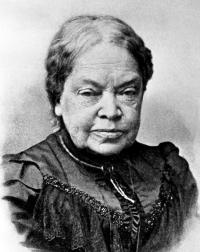
Sommermorgen
Auf Bergeshöhen schneebedeckt,
Auf grünen Hügeln weitgestreckt
Erglänzt die Morgensonne;
Die tauerfrischten Zweige hebt
Der junge Buchenwald und bebt
Und bebt in Daseinswonne.
Es stürzt in ungestümer Lust
Herab aus dunkler Felsenbrust
Der Gießbach mit Getose,
Und blühend Leben weckt sein Hauch
Im stolzen Baum, im niedren Strauch,
In jedem zarten Moose.
Und drüben wo die Wiese liegt,
Im Blütenschmuck, da schwirrt und fliegt
Der Mücken Schwarm und Immen.
Wie sich’s im hohen Grase regt
Und froh geschäftig sich bewegt,
Und summt mit feinen Stimmen.
Es steigt die junge Lerche frei
Empor gleich einem Jubelschrei
Im Wirbel ihrer Lieder.
Im nahen Holz der Kuckuck ruft,
Die Amsel segelt durch die Luft
Auf goldenem Gefieder.
O Welt voll Glanz und Sonnenschein,
O rastlos Werden, holdes Sein,
O höchsten Reichtums Fülle!
Und dennoch, ach – vergänglich nur
Und todgeweiht, und die Natur
Ist Schmerz in Schönheitshülle.
Marie Ebner-Eschenbach
(1830 – 1916)
Sommermorgen
• fleursdumal.nl magazine
More in: Archive E-F, Archive E-F, CLASSIC POETRY

Grenzen der Liebe
Alles kann Liebe:
zürnen und zagen,
leiden und wagen,
demütig werben,
töten, verderben,
alles kann Liebe.
Alles kann Liebe:
lachend entbehren,
weinend gewähren,
heißes Verlangen
nähren in bangen,
in einsamen Tagen –
alles kann Liebe –
nur nicht entsagen!
Marie Ebner-Eschenbach
(1830 – 1916)
Grenzen der Liebe
•fleursdumal.nl magazine
More in: Archive E-F, Archive E-F, CLASSIC POETRY
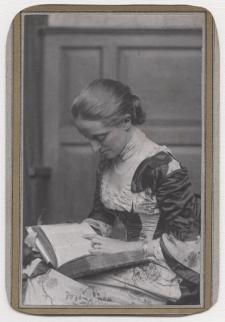
Ah! Would I Could Forget
The whispering water rocks the reeds,
And, murmuring softly, laps the weeds;
And nurses there the falsest bloom
That ever wrought a lover’s doom.
Forget me not! Forget me not!
Ah! would I could forget!
But, crying still, “Forget me not,”
Her image haunts me yet.
We wander’d by the river’s brim,
The day grew dusk, the pathway dim;
Her eyes like stars dispell’d the gloom,
Her gleaming fingers pluck’d the bloom.
Forget me not! Forget me not!
Ah! would I could forget!
But, crying still, “Forget me not,”
Her image haunts me yet.
The pale moon lit her paler face,
And coldly watch’d our last embrace,
And chill’d her tresses’ sunny hue,
And stole that flower’s turquoise blue.
Forget me not! Forget me not!
Ah! would I could forget!
But, crying still, “Forget me not,”
Her image haunts me yet.
The fateful flower droop’d to death,
The fair, false maid forswore her faith;
But I obey a broken vow,
And keep those wither’d blossoms now!
Forget me not! Forget me not!
Ah! would I could forget!
But, crying still, “Forget me not,”
Her image haunts me yet.
Sweet lips that pray’d–“Forget me not!”
Sweet eyes that will not be forgot!
Recall your prayer, forego your power,
Which binds me by the fatal flower.
Forget me not! Forget me not!
Ah! would I could forget!
But, crying still, “Forget me not,”
Her image haunts me yet.
Juliana Horatia Ewing
(1841–1885)
Poem
Ah! Would I Could Forget
• fleursdumal.nl magazine
More in: Archive E-F, Archive E-F, Juliana Horatia Ewing, Tales of Mystery & Imagination
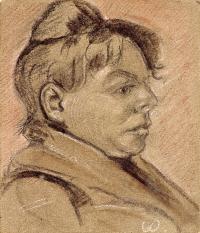
De eer.
t Is een
kanon.
‘t Is een
geweer….
Men schiet.
Men moordt:
Maar ‘t is
voor d’eer!
Men steekt
elkaar
een mes
in ‘t hart,
En zie
zoo’n daad
is wit,
niet zwart.
Want ‘t is
voor d’eer!
Men steelt.
Men brandt.
En zie
‘t is goed,
want ‘t is
voor ‘t land!
Vervloekt
die eer!
Vervloekt
dat land!
Vervloekt
de mensch!
Vervloekt
de hand,
die grijpt
naar ‘t zwaard,
die grijpt
naar d’eer,
die grijpt
in bloed.
Steeds meer.
Steeds weer.
Weg met
die eer!
Z’is voos!
Z’is rot!
Wat maakt
zij van
den mensch?
Een zot!
Agnita Feis
(1881 – 1944)
Uit: Oorlog. Verzen in Staccato (1916).
De eer
• fleursdumal.nl magazine
More in: *War Poetry Archive, Agnita Feis, Antony Kok, Archive E-F, De Stijl, Doesburg, Theo van, Feis, Agnita, Theo van Doesburg, Theo van Doesburg (I.K. Bonset), WAR & PEACE
Thank you for reading Fleurs du Mal - magazine for art & literature